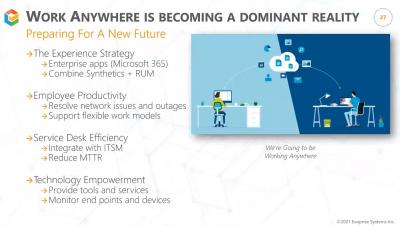Sponsored Post
Branch Office Monitoring With EUEM
The modern workforce has become increasingly remote and distributed, necessitating the need for monitoring solutions to ensure optimal performance in branch offices. Employee Experience Monitoring or Digital experience monitoring (DEM) has emerged as the critical tool for IT teams and businesses to address the challenges associated with remote work environments. This article combines two informative pieces to provide a comprehensive guide on how to monitor remote branch offices using DEM.




